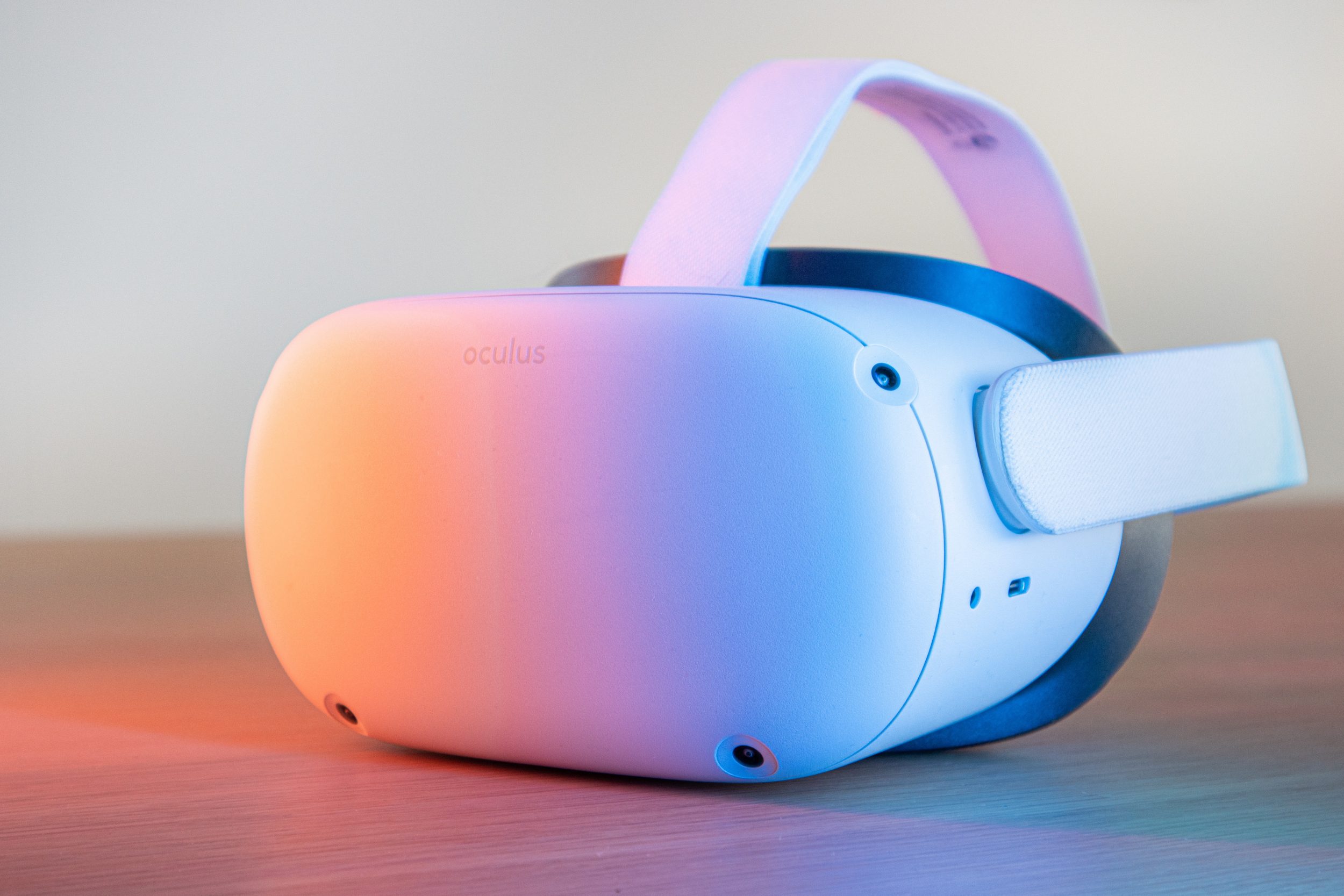Over the last decade, consumption of newer technologies such as virtual reality have steadily increased across the globe. Naturally, people are interested in trying new gadgets that help them experience a wide variety of things, and with all of the different opportunities and experiences that virtual reality (VR) devices create, people are able to see, feel, and immerse themselves in a way that may have never been possible before. The possibilities that VR creates are endless, as a person can feel as though they are actually experiencing real-life roller coasters, concerts, or being the ‘actual’ player in a video game from the comfort of their own home. This same sentiment holds true when discussing the role that VR technology can play within the mental health community. In the last few years, technology developers and clinical researchers have found innovative ways to implement VR therapies within mental health spaces to assess and treat patients. For the first time in history, VR environments provide clinicians with another tool to treat patients in an environment that very closely resembles their real-world experiences. In this blog, we will discuss what VR is and how it has been implemented thus far in the world of mental health.
Virtual Reality vs. Artificial Intelligence
In a past blog, we discussed the role artificial intelligence (AI) plays in the world of mental health; and though virtual reality and AI are two innovative types of technology, there is actually quite a stark difference between the two. AI refers to technology’s ability to replicate and even replace human actions or intelligence. It can be used to collect information, automate specific tasks, and improve efficient communication, but it cannot necessarily replicate an environment or experience for a person. In the context of mental health, AI has shown some ability in aiding clinicians make mental health diagnoses through sorting through large amounts of genetic information that can recognize genes that are related to mental health conditions. AI can also be used to build human-sounding chat boxes to connect and chat with patients who may need support and advice.
On the other hand, VR creates very realistic, immersive virtual experiences that are meant to simulate real life. Research shows that the most common types of immersive VR therapies for mental health include an enclosed head-mounted device1 that showcases various 3-D images on a screen for a person to fully immerse themselves into any given environment as if they are truly there. In the context of mental health, VR can be used by clinicians to simulate various types of situations that may be helpful in assessing mental health symptoms. For example, VR technology can set up a stressful or anxiety-inducing situation for a patient to assess whether they present with the symptoms and biological responses that are related to a mental health condition. On the other hand, these applications of VR can also be used to expose patients to stressful situations as a means of ‘exposure therapy’. When patients are able to experience anxiety-inducing situations in the safety of a highly-controlled clinical setting, professionals are able to observe and treat patients in a safe and immediate way. The applications of VR and AI are both very novel and innovative within the mental health community, and while they serve different functions, both forms of technology show promise into how treatment for patients can become more efficient and effective in the future.
Applications of VR Therapy to Various Disorders
Anxiety Disorders
Traditional forms of therapies targeted toward anxiety disorders are already known to be effective ways to combat the symptoms that come with the illness. However, as with any form of therapy, it has its drawbacks. For example, individuals who suffer from phobia-driven anxiety disorders may need to go through exposure therapy in order to overcome their fear and apprehension surrounding any particular object or experience. This type of therapy can become expensive and difficult to manage as patients may be subjected to extensive travel, harsh weather conditions, and outside stimuli that are not conducive or beneficial to the exposure therapy process. To combat some of these issues, past studies2 have used virtual reality exposure therapy, or VRET, to replicate an exposure experience that can be thoroughly done in the privacy and safety of a clinical setting. Not only does VRET provide clinicians with a highly-controlled environment that allows them to regulate variables that they would not be able to in the real world, but it can be done inexpensively. In the review of 49 studies using VRET, researchers found that when compared with different forms of CBT, VR technology was useful at being a diagnostic tool for paranoid ideations.
Another study3 done in 2018 showed that VR could be used to simulate real-life environments to elicit social anxiety in the same way that those situations would in daily life. For this study, the patients wearing head-mounted devices were subjected to a behavioral assessment task in which they had to engage in conversation with a stranger at a bus stop or attend a foreign language class in which they had to interact with their teacher and answer questions. Another group of participants underwent these same tasks in real life. After comparison, studies showed that the individuals who underwent these tasks in VRET versus in vivo had similar results in terms of social anxiety. Both groups had comparable levels of salivary cortisol, eye movements, and cardiovascular activity following these stress-inducing interactions. In addition, a meta-analysis1 of nine randomized controlled trials showed that VR exposure and in vivo exposures for different phobias found the same types of effects for both interventions, suggesting that similar behaviors occur whether the stressful situation was virtual or not.
Post Traumatic Stress Disorder
Researchers have focused on developing VR interventions4 to help soldiers from the Iraq and Afghanistan wars who particularly suffer from post traumatic stress disorder. Currently, forms of talk therapy such as cognitive behavioral therapy have been implemented as one of the main forms of intervention to treat PTSD symptoms. However, it can be cumbersome and sometimes unreliable to ask these patients to use their imagination in order to re-expose themselves to traumatizing and triggering scenes of war. VRETs allow soldiers to experience the situations that led to their PTSD in a very controlled environment. As patients are more and more exposed to these environments within VR, they slowly learn to decrease their fears associated with the traumatizing event.
In addition, VR can help customize virtual environments to be the most effective and beneficial they can be for patients. For example, soldiers with PTSD originally underwent very specific combat scenarios that were instrumental in contributing to their trauma. Research shows that the most effective treatment for PTSD includes exposure to cues that are very similar (if not identical) to their experiences that caused the trauma in the first place. With VR, it is feasible for clinicians to replicate the specific details and idiosyncrasies of their patient’s memories and experiences that can be further examined and treated effectively. While this can be a great development, it may be too overwhelming for patients who are avoidant regarding their past trauma. Having to relieve the sights, sounds, and even smells or tastes of a traumatic experience can be too much, and this leads to drop-out from clinical studies. VR developers are working on a solution to potentially include elements of emotional engagement that allow participants to overcome their avoidance and fear of confronting past triggers and trauma. To learn more about PTSD, read our page here.
Benefits of VR Therapy as Treatment
VR has been around for quite some time in the gaming and entertainment worlds, but is starting to become more relevant among mental health research.
Things to Consider About VR
As a safety precaution, there are criteria that patients must meet before engaging in virtual reality therapy. Patients who suffer from seizures, migraines, visual or auditory hallucinations, or prone to falls would not be advised to engage with the technology. As is the case with any new type of technology, it is important to approach VR with caution before trying it out for mental health related intervention. The scenarios and experiences that VR can replicate may be very overwhelming for patients, and the technology is very new to clinicians everywhere. It will take time before VR can be fully implemented into common medical and mental health offices, and before then more research should be done into how effective VR can be at helping clinicians assess patients and provide quality treatment to patients who may want to use it in place of in vivo exposure therapies.
Research from a 2014 study3 demonstrated the acceptability of VR from mental health patients over a period of time. In the beginning of the study, patients viewed the VR interventions as positively as they did the traditional therapy exposures. However, at the 3 month follow-up patients were less satisfied with VR interventions than they were with the traditional intervention. Sometimes the situations and environments that VR builds are not consistent with reality and may actually be unrealistic to the patient’s issues. This can make their situations even worse and cause even distrust between patient and provider. Additionally, some VR units can be very expensive and stressful to use for patients. Over time, it may be more cost effective to use VR headsets and technology in an office setting as many people begin to use it more regularly, but there are high costs when building specific experiences and worlds for a variety of different patients. Overall, there is much to consider when looking at VR and its future within the mental health community. It has shown a lot of promise in terms of helping patients be assessed and treated in an effective way, and maybe the future will bring even more concrete, more affordable VR options for patients and clinicians.
References:
-
Bell, Imogen H, and Jennifer Nicholas. Virtual Reality as a Clinical Tool in Mental Health Research and Practice, 2020, www.ncbi.nlm.nih.gov/pmc/articles/PMC7366939/.
-
Oing, Theodore, and Julie Prescott. “Implementations of Virtual Reality for Anxiety-Related Disorders: Systematic Review.” JMIR Serious Games, U.S. National Library of Medicine, 7 Nov. 2018, pubmed.ncbi.nlm.nih.gov/30404770/.
-
Emmelkamp, Paul MG, and Katharina Meyerbröker. Virtual Reality Therapy in Mental Health – Annual Reviews, May 2021, www.annualreviews.org/doi/10.1146/annurev-clinpsy-081219-115923.
-
“Expanding Mental Health Uses for Virtual Reality.” Psychiatry.Org – Expanding Mental Health Uses for Virtual Reality, 21 June 2021, www.psychiatry.org/news-room/apa-blogs/expanding-mental-health-uses-for-virtual-reality.






